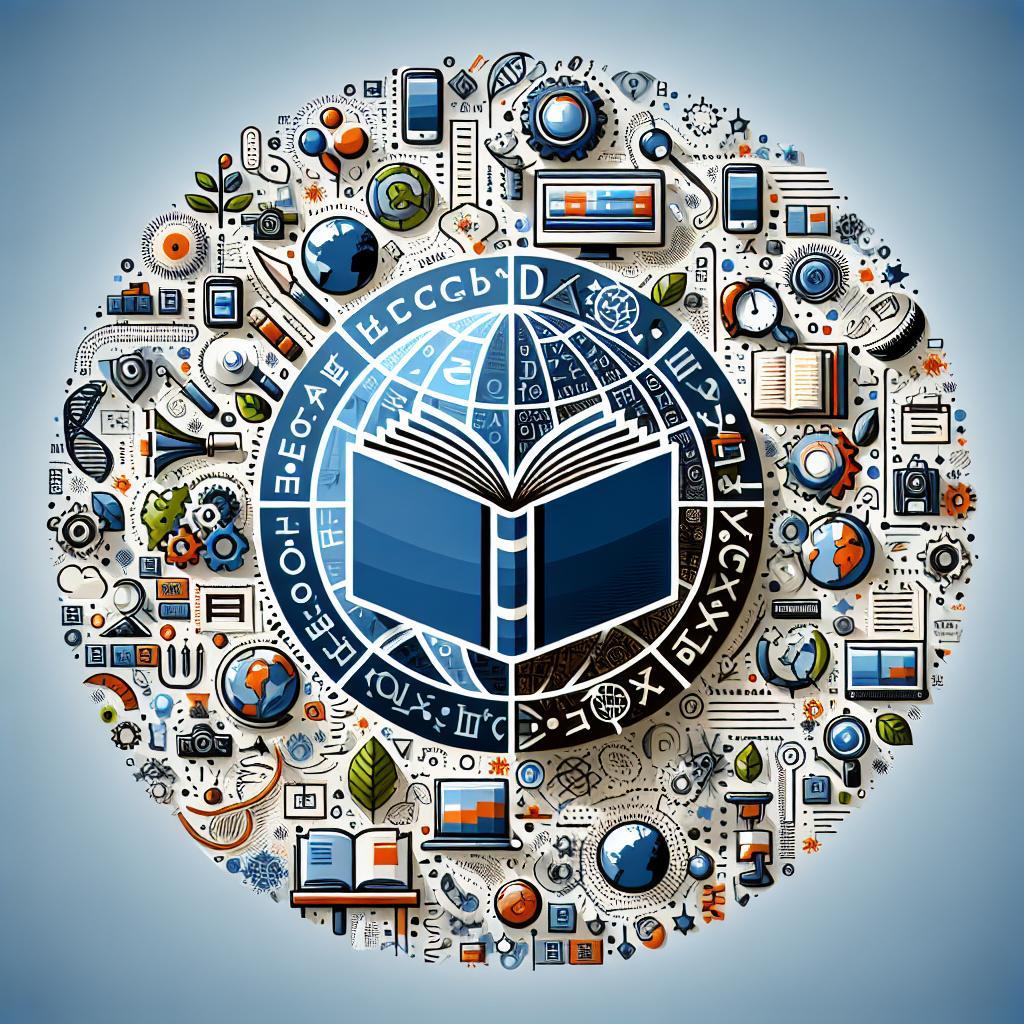Work-Life Balance for Educators

In the corridors of learning, where chalk dust mingles with the murmur of curious minds, educators tirelessly weave the fabric of our future. Yet, behind every lesson plan and every inspiring lecture, lies a delicate balancing act. It’s the harmony between the echoing demands of the classroom and the unsung needs of personal well-being. Welcome to the world of work-life balance for educators—a realm where passion for teaching meets the quest for personal fulfillment. Join us as we unravel the intricate dance of nurturing knowledge while nurturing oneself, exploring strategies that empower educators to flourish both inside and beyond the school walls.
Table of Contents
- Finding Harmony: Balancing Classroom Demands and Personal Time
- Structured Plans: Crafting a Daily Schedule that Supports Well-being
- Mindfulness and Self-care: Essential Practices for Teachers
- Building a Support Network: From Colleagues to Family
- Leveraging Technology: Smart Tools to Ease the Workload
- Setting Boundaries: The Art of Saying No and Prioritizing Self
- Q&A
- To Conclude

Finding Harmony: Balancing Classroom Demands and Personal Time
Educators often find themselves caught in a whirlwind of lesson planning, grading, and extracurricular commitments. To navigate these demands effectively while preserving personal time, educators can adopt strategies that foster balance.
- Establish Clear Boundaries: Define specific times for work-related tasks and personal activities.
- Prioritize Tasks: Use a planner to organize and prioritize tasks, ensuring the most important duties are addressed first.
- Leverage Technology: Utilize education-specific apps and tools to streamline communication and reduce administrative workload.
| Strategy | Benefit |
|---|---|
| Delegation | Reduces stress by sharing responsibilities. |
| Time Blocking | Increases productivity by focusing on one task at a time. |
| Self-care Activities | Improves overall well-being and mental health. |
Finding balance requires a mindful approach to time management and the willingness to set boundaries. By prioritizing tasks, leveraging technology, and incorporating self-care practices, educators can maintain a harmonious equilibrium between classroom demands and personal time.

Structured Plans: Crafting a Daily Schedule that Supports Well-being
Creating a daily schedule that not only accommodates work responsibilities but also promotes overall well-being requires thoughtful planning. Start by identifying your key priorities and divide your day into dedicated time blocks. Allocate specific times for teaching, grading, and preparing lessons, but ensure to incorporate periods for self-care and relaxation as well. This balance can minimize burnout and enhance productivity. Consider integrating elements of mindfulness, such as short meditation sessions or mindful breaks, between intense work periods to maintain mental clarity.
To keep track of your structured plan efficiently, use a table format that visually segments your day. Here’s an example schedule to inspire your own:
| Time | Activity |
|---|---|
| 6:30 AM | Morning Exercise/Stretch |
| 7:00 AM | Healthy Breakfast |
| 8:00 AM | Lesson Planning/Preparation |
| 10:00 AM | Classroom Teaching |
| 12:00 PM | Lunch Break |
| 1:00 PM | Grading/Feedback |
| 3:00 PM | Afternoon Walk |
| 4:00 PM | Professional Development/Reading |
| 6:00 PM | Dinner & Family Time |
| 8:00 PM | Relaxation (e.g., Reading, Hobbies) |
| 10:00 PM | Sleep |
By following a structured daily schedule, educators can ensure they are giving significant attention to their professional duties while carving out essential time for self-care and personal growth. Flexible yet consistent routines lead to a more balanced and fulfilling life.

Mindfulness and Self-care: Essential Practices for Teachers
Incorporating mindfulness and self-care into their daily routines, educators can significantly improve their overall well-being. Simple practices such as deep breathing exercises, short meditation sessions, and mindful walking can help teachers manage stress and maintain focus throughout the day. A few practical self-care activities that teachers can easily integrate into their schedules include:
- Gratitude journaling: Take a few minutes each day to write down things you’re grateful for.
- Mindful eating: Pay full attention to the experience of eating and savor each bite.
- Stretch breaks: Incorporate short stretching sessions between classes to relieve tension.
Moreover, creating a supportive environment at school can further enhance a teacher’s ability to practice self-care. Establishing a communal break room with calming decor, healthy snacks, and a quiet corner for relaxation can promote subtle yet significant shifts in mental well-being. Below are some essentials for a teacher’s break room:
| Item | Benefit |
|---|---|
| Relaxation area | Provides a quiet space for meditation or a quick nap. |
| Healthy snacks | Nourishes the body and sustains energy levels. |
| Soothing decor | Creates a calming atmosphere to de-stress. |

Building a Support Network: From Colleagues to Family
Surrounding yourself with a solid support network is essential to achieving work-life balance as an educator. This network should encompass various stakeholders in your life, from professional colleagues to close family members. **Cultivating meaningful relationships with colleagues** allows for the sharing of resources, ideas, and emotional support. Collaborate on lesson plans, attend educational workshops together, or simply share a coffee during breaks to foster a sense of community within the workplace.
Don’t overlook the invaluable support from family and friends. Include your loved ones in discussions about your professional challenges and successes. **Create a family routine that balances time for work, relaxation, and togetherness** to maintain harmony. To help plan and allocate time effectively, here is a simple table:
| Activity | Time Allocation |
|---|---|
| Lesson Planning | 2 Hours |
| Family Dinner | 1 Hour |
| Personal Relaxation | 1 Hour |

Leveraging Technology: Smart Tools to Ease the Workload
Integrating technology into daily tasks can dramatically lighten the load for educators, creating space for a healthier work-life balance. **Smart tools** like digital planners and automated grading software simplify administrative duties, allowing teachers to focus more on delivering engaging lessons. With **cloud storage solutions**, lesson plans and resources are easily accessible from any device, eliminating the constant need to lug around heavy binders. Embracing online platforms for student assignments and feedback not only speeds up the grading process but also provides students with instant insights and progress tracking.
Interactive tools such as **virtual whiteboards** and **learning management systems** (LMS) foster dynamic and collaborative classroom environments. Here are a few technologies educators can tap into:
- **Quiz creation tools**: For quick assessments and instant feedback.
- **Discussion forums**: To facilitate peer interaction outside of classroom hours.
- **AI-powered tutoring systems**: Ensuring personalized student support.
| Tool | Use Case |
|---|---|
| Google Classroom | Assignment management and collaboration |
| Kahoot! | Interactive quizzes and engagement |
| Grammarly | Writing assistance and grading |

Setting Boundaries: The Art of Saying No and Prioritizing Self
Setting boundaries is a critical component of maintaining a healthy work-life balance, especially for educators who often find themselves overwhelmed by multiple responsibilities. **Learning to say no** can be empowering and is essential for preserving one’s mental and emotional well-being. Consider the following strategies to establish effective boundaries:
- Communicate clearly: Let colleagues and supervisors know about your limitations.
- Set specific work hours: Stick to a schedule that allows you to focus on personal time.
- Prioritize tasks: Focus on what truly matters and decline added responsibilities that don’t align with your core duties.
- Self-care activities: Allocate time for relaxation, hobbies, and family.
Beneath the surface level of setting boundaries lies the deeper art of prioritizing oneself. Educators must recognize the value of self-investment to avoid burnout. Below is a comparison of “Boundary Practices” against their corresponding “Self-Prioritization Benefits”:
| Boundary Practice | Self-Prioritization Benefit |
|---|---|
| Limiting after-hours emails | Improved mental clarity |
| Delegating tasks | Reduced stress levels |
| Taking regular breaks | Increased productivity |
| Scheduling “me-time” | Enhanced emotional well-being |
Q&A
Q&A: Navigating Work-Life Balance for Educators
Q1: Why is work-life balance particularly important for educators?
A1: Work-life balance is crucial for educators because teaching is an emotionally and physically demanding profession. Educators often invest tremendous energy into their students, lesson planning, grading, and administrative tasks. Without a proper balance, burnout becomes a real possibility, which can ultimately impact both personal well-being and professional effectiveness. Striking a balance allows educators to recharge, maintain enthusiasm for teaching, and foster both professional and personal growth.
Q2: What are some common challenges educators face when trying to achieve work-life balance?
A2: Educators often grapple with several challenges in their quest for work-life balance, including:
- Work Overload: Excessive grading, lesson planning, and administrative duties can spill over into personal time.
- Emotional Drain: Teaching demands significant emotional investment, making it hard to switch off after work.
- Pressure to Perform: High expectations from institutions, parents, and even from oneself can lead to overwork.
- Lack of Time: Balancing time between work obligations and personal life, especially for those with families or personal hobbies, can be difficult.
Q3: What strategies can educators employ to improve their work-life balance?
A3: Educators can adopt several strategies to cultivate a better work-life balance, such as:
- Set Boundaries: Designate specific ‘work hours’ and stick to them. Use this time efficiently and avoid taking work home whenever possible.
- Prioritize and Delegate: Identify urgent and important tasks, and delegate or postpone less critical ones.
- Self-Care Practices: Cultivate habits that promote mental and physical well-being, such as exercising, meditating, or engaging in hobbies.
- Seek Support: Form support networks with colleagues to share tips, resources, and encouragement. Don’t hesitate to ask for help when needed.
- Continuous Learning: Engage in professional development that includes time management and stress-management training.
Q4: How can schools and institutions support educators in achieving better work-life balance?
A4: Schools and institutions play a vital role in fostering work-life balance by implementing supportive policies and practices, such as:
- Professional Development: Offer workshops on time management, stress reduction, and mental health.
- Reasonable Workload: Ensure that teachers’ workloads are manageable and provide sufficient planning time during school hours.
- Wellness Programs: Introduce wellness programs that include counseling services, exercise opportunities, and mindfulness sessions.
- Flexible Scheduling: Allow for flexible work hours or remote work options when feasible.
- Appreciation and Recognition: Foster a positive work environment by recognizing and appreciating educators’ efforts and achievements.
Q5: Can digital tools help educators manage their work-life balance?
A5: Absolutely! Digital tools can be a boon for teachers aiming to streamline their workflow and reclaim personal time. Tools like:
- Learning Management Systems (LMS): These platforms can centralize lesson plans, assignments, and grades, reducing administrative workload.
- Time-Management Apps: Apps like Trello, Asana, or Google Calendar can help educators organize tasks and deadlines efficiently.
- Communication Tools: Platforms like Slack or Zoom can facilitate efficient communication with colleagues and parents, reducing the need for after-hours meetings.
- Wellness Apps: Apps such as Headspace or Calm can assist educators in integrating mindfulness and relaxation exercises into their daily routine.
Q6: Are there examples of successful work-life balance practices from other countries that educators can emulate?
A6: Yes, some countries exhibit exemplary practices in supporting educators’ work-life balance. For instance:
- Finland: Known for its high education standards and balanced approach, Finnish educators benefit from shorter school days, ample planning time, and little homework, reflecting a system that respects teachers’ personal and professional boundaries.
- Japan: Through initiatives like “Kurashi no Iroha,” Japan promotes work-life harmony by implementing strict limits on overtime and encouraging after-school club activities that are managed by specialized staff, not teachers.
These examples demonstrate varying methods and cultural approaches that can inspire innovative work-life balance solutions adaptable to different educational contexts.
To Conclude
As the final bell echoes through the hallways and the bustling classrooms settle into silence, the symphony of an educator’s day draws to a close. Work-life balance for educators isn’t a distant dream, but a harmonious melody achievable with mindful practices and conscious choices. It’s an intricate dance of nurturing both students’ growth and personal well-being.
May this exploration into achieving equilibrium serve as a gentle reminder: just as educators inspire others through dedication, they too deserve a fulfilling rhythm of work and personal life. As the sun sets on another day of teaching, let it also rise on newfound moments of peace, joy, and rejuvenation. Here’s to balancing the scales, one thoughtful step at a time.








Responses